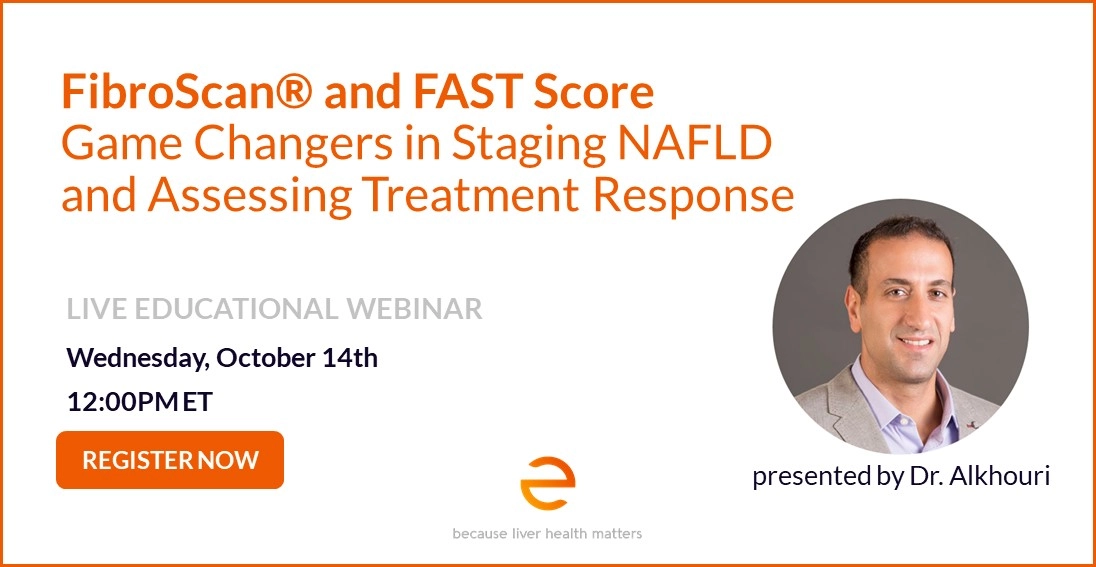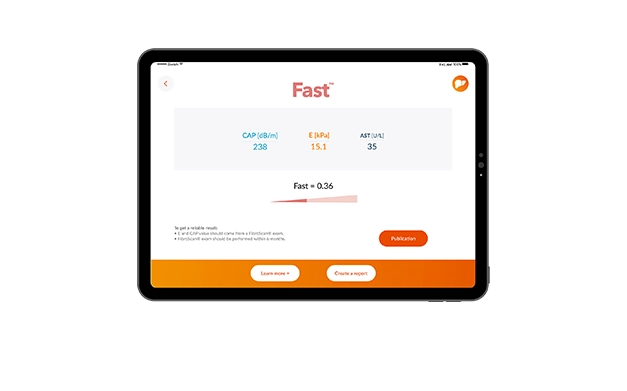NAFLD includes non-alcoholic fatty liver (NAFL), non-alcoholic steatohepatitis (NASH) and its complications of liver fibrosis, cirrhosis and hepatocellular carcinoma.
Histologically, the spectrum of metabolic steatopathy lesions varies, ranging from simple steatosis lesions (presence of lipid vacuoles, usually macro vesicles within hepatocytes), to inflammation, and fibrotic lesions.1
Steatosis is significant when it is greater than 5%. NASH lesions are very similar to those seen in alcoholic hepatitis. They include to varying degrees lesions of macro- or micro-vesicular steatosis, lobular inflammation, hepatocyte degeneration or ballooning.2, 3
This inflammation and hepatocellular injury initiate hepatic fibrosis, which can progress to cirrhosis and hepatocellular carcinoma. An increase in the incidence of hepatocellular carcinoma has been reported in obese patients with cryogenic cirrhosis.4, 6 In addition, this may be more rapid and less linear, as cases of hepatocellular carcinoma without cirrhosis have recently been reported.7
These liver diseases represent the first cause of liver disease in France. About 25% of the world’s population would have a NAFLD and 1.5 to 6.5% a NASH.8, 9 Finally, a modeling (Markov model) showed the predictions of increase of NAFLDs and NASH by 2030 In the United States, NAFLD cases could increase by 21%, from 83.1 million (2015) to 100.9 million (2030), and NASH cases could increase by 63%, from 16.52 million to 27 million cases. The prevalence of NAFLD in adults (over the age of 15) is reported to be 33.5% in 2030. In 2015, about 20% of NAFLD cases are NASH increasing to 27% in 2030.
These high prevalences contribute to the epidemic of overweight and obesity. Recent epidemiological studies in France (Obepi 2012) have shown a high prevalence of obesity (15%, BMI> 30 kg / m2) or overweight (32.3%, BMI: 25 – 30 kg / m2). Obesity is associated with complications including type 2 diabetes, high blood pressure, cardiovascular problems but also liver complications.
A meta-analysis presented at the European Congress of Liver Diseases showed a high prevalence of NASH and liver fibrosis in patients with type 2 diabetes.10 The final size of this sample included 27,020 patients (included from 2003- 2014) with type 2 diabetes. The prevalence of NASH among these diabetic patients was 65.2% (95% CI: 51.7-76.7). The diagnosis of NASH was based on histological criteria. The prevalence of advanced fibrosis (stage 3 and 4 on histological criteria) was 15% (95% CI: 8.2-26.1).
These figures show the high prevalence of this dysmetabolic liver disease in patients with type 2 diabetes who may have long-term hepatic prognosis. Thus, any patient with type 2 diabetes elasticity.
Sources:
- Hui JM, Kench JG, Chitturi S, Sud A, Farrell G, Byth K, et al. Long-term outcomes of cirhosis in nonalcoholic steatohepatitis compared with hepatitis C. Hepatology. 2003;38:420-7.
- Brunt EM, Janney CG, Di Bisceglie AM, Neuschwander-Tetri BA, Bacon BR. Nonalcoholic steatohepatitis: a proposal for grading and staging the histological lesions. Am J Gastroenterol. 1999;94(9):2467-74.
- Kleiner DE, Brunt EM, Van Natta M, Behling C, Contos MJ, Cummings OW, et al. Design and validation of a histological scoring system for nonalcoholic fatty liver disease. Hepatology. 2005;41(6):1313-21.
- Nair S, Mason A, Eason J, Loss G, Perillo R. Is obesity an independent risk factor for hepatocellular carcinoma in cirrhosis. Hepatology. 2002;36:150-5.
- Ratziu V, Bonyhay L, Di Martino V, Charlotte F, Cavallaro L, Sayegh-Tainturier M, et al. Survival, liver failure and hepatocellular carcinoma in obesity-related cryptogenic cirrhosis. Hepatology. 2002;35:1485-93.
- Caldwell SH, Hylton AI. The clinical outcome of NAFDL including crytogenic cirrhosis. In: Farrell G, George J, de la M Hall P, McCullough A, editors. Fatty liver disease: NASH and related disorders. Oxford: Blackwell Publishing; 2005. p. 168-80.
- Paradis V, Zalinski S, Chelbi E, Guedj N, Degos F, Vilgrain V, et al. Hepatocellular carcinomas in patients with metabolic syndrome often develop without significant liver fibrosis: a pathological analysis. Hepatology. 2009;49(3):851-9.
- Tran A, Gual P. Non-alcoholic steatohepatitis in morbidly obese patients. . Clin Res Hepatol Gastroenterol 2013; http://dx.doi.org/10.1016/j.clinre.2012.07.005.
- Anty R, Canivet C, Gual P, Tran A. Stéatoses hépatiques métaboliques : histoire naturelle, physiopathologie et démarche diagnostique. Hépato Gastro. 2017;24:702-18..
- Golabi P, Paik J, Deavila L, Fukui N, Srishord M, Younossi Z. The worldwide prevalence of non-alcoholic steatohepatitis (NASH) in patients with Type 2 diabetes mellitus. J Hepatol. 2018;68:S841



